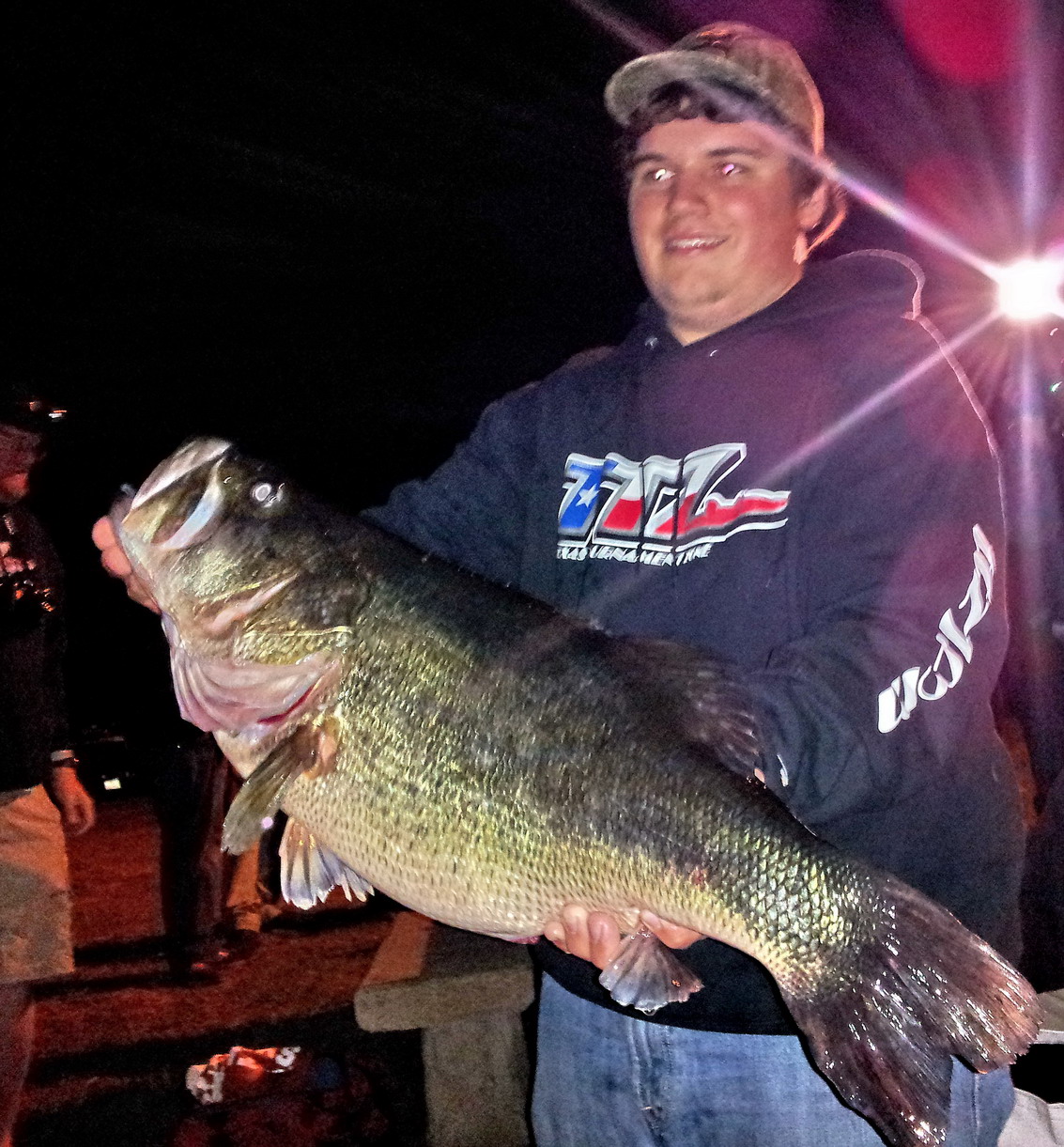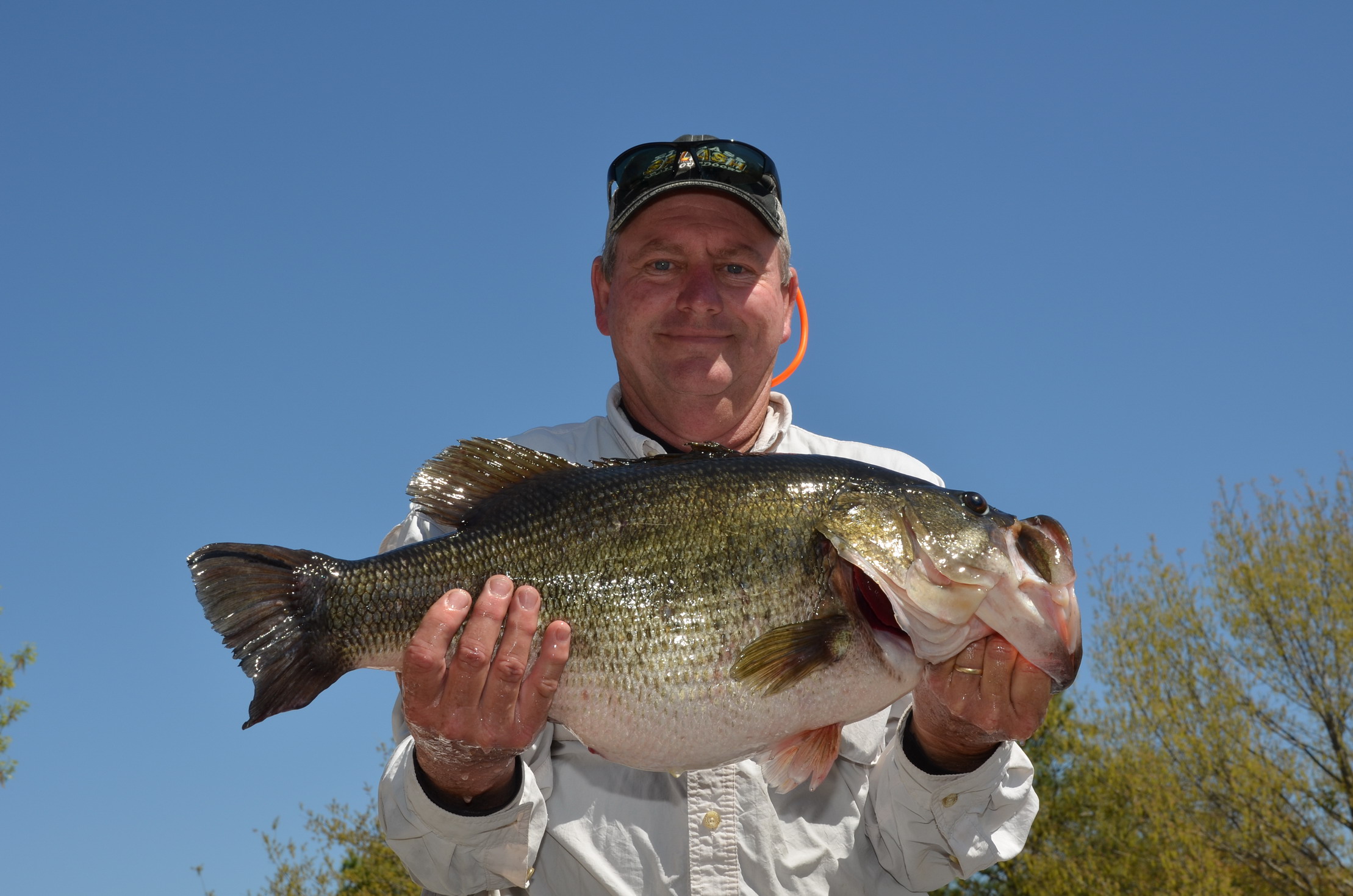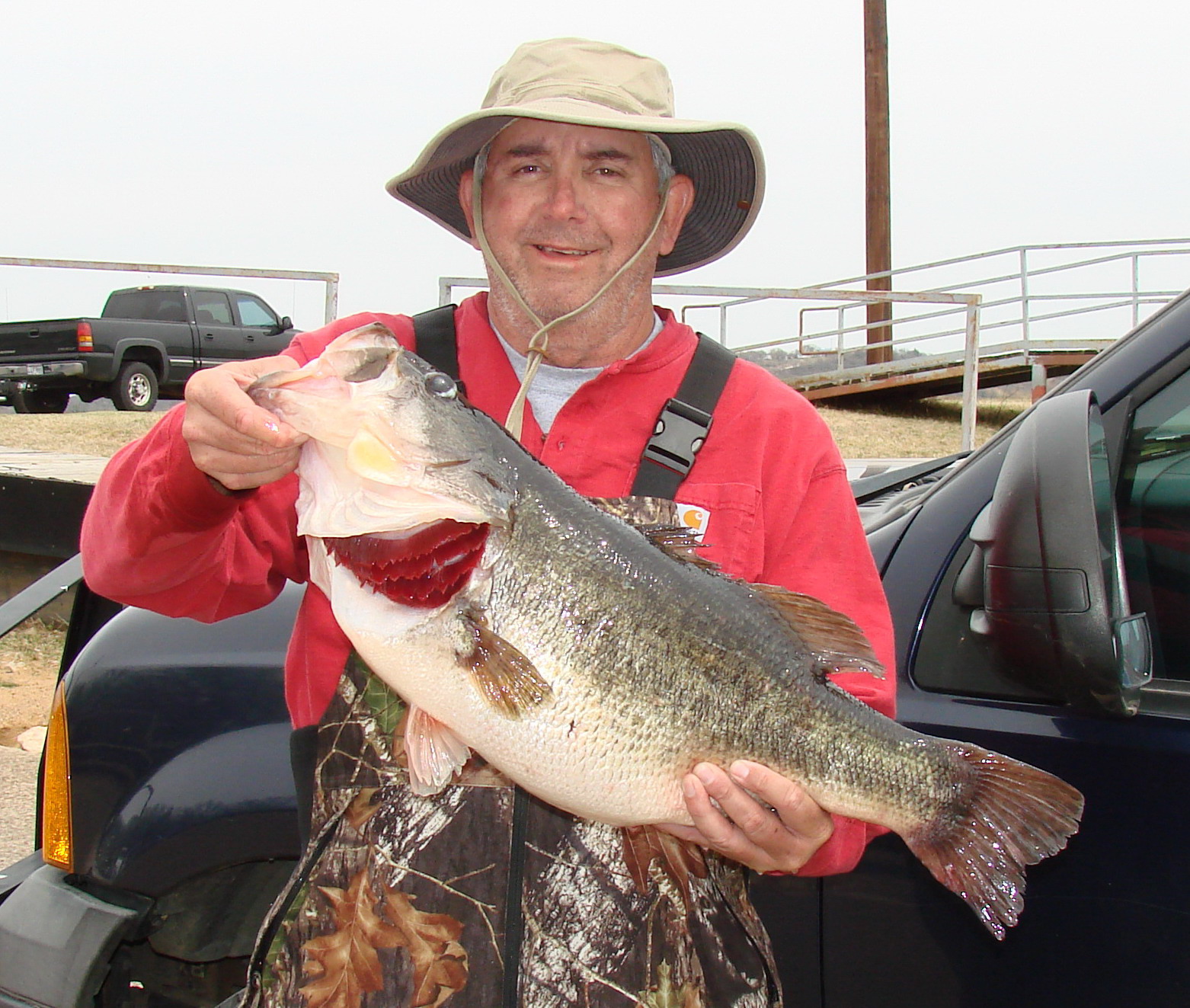Angling: Donating Largemouth Bass
Thursday, April 4th, 2013
Colin Pack of Round Rock caught Toyota ShareLunker 548 from Lake Austin March 27, image by Nathan Reynolds, © Texas Parks and Wildlife Department
This is Passport to Texas
If you reel in a largemouth bass from Texas waters, and it weighs 13-pounds or more, donate it to the Toyota Sharelunker program through the end of the month; you’ll help spawn the next generation of big bass.
To donate a fish, handle it as little as possible, then…
Get a weight on it. If you have a set of scales that you feel like are close enough that you can actually say it’s a good enough weight to call us, weigh it and let us know.
David Campbell coordinated the program for 26 years before retiring in 2012. He explains what to do if you think you have a lunker, and want to donate it to the program.
We would like to have these fish in our possession in less than 12 hours. I realize sometimes if you’re on the other side of the state of Texas is may take me a few hours to get there. If you have to go somewhere and have that fish weighed, leave it in the water in aerated live well or whatever it is, try not to dry the fish off. If that fish weighs 13-pounds on a set of certified scales—whether it’s for business or whatever it is—give us a call as quick as possible. And we dispatch a vehicle; and take care of it until we get there. That’s the main thing.
Log onto the Texas parks and Wildlife website for more information.
That’s our show…with support from the Wildlife and Sport Fish restoration Program…providing funding for the Texas Freshwater Fisheries Center.
For Texas Parks and Wildlife…I’m Cecilia Nasti.






 Passport to Texas is a
Passport to Texas is a  Passport to Texas is made available by:
Passport to Texas is made available by: